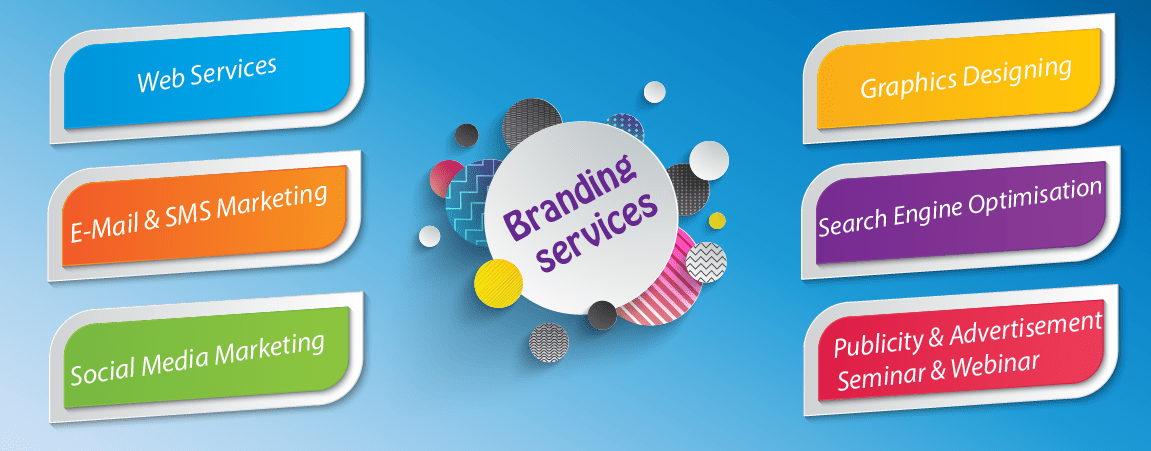Powerful brands don’t just happen – they’re developed through careful planning and extensive work.
A brand isn’t just a memorable name. it’s a set of differentiating promises that link a product or a service to its customers. It knows itself and communicates consistently, whether through advertising and packaging or pricing and customer-service policies. A successful brand generates consumer loyalty and long-term financial return.
Branding is the process of determining your competitive advantages, building an institutional culture and business strategy around those advantages, and then communicating that brand effectively and consistently. Here are ten tips to build a better brand.
1. Analyze the Competition: To be different from your competitors, study them closely. Understanding the strategy and dynamics behind competing brands will provide the backdrop against which to craft a distinctive brand with long-term competitive advantage. Find out
- How consumers perceive your competition.
- How committed competitors are to different market segments.
- Your competitors’ strengths and weaknesses
2. Identify Your Strengths: Through internal research and target market analysis, uncover potential sources of competitive advantage. Determine which key benefits provide maximum relevance and differentiation for your product or service.
3. Validate Your Advantages: Make sure your strengths are important to the market or a segment of the market.
4. Know Your Customers and Their Value: Some customers have more value – and some have more opportunity – than others. To determine customer value, evaluate such metrics as:
- How much a customer is currently spending on your product/service.
- How much that customer will spend in the future.
- How often the customer buys in the category.
- What share of category purchases your product or service gets (or, in simpler terms: is the customer a loyal buyer or a brand switcher?)
- Whether the customer pays full price or a promotional/discounted price.
5. Brand compatibility: Brand compatibility requires knowledge about the customer, including factors such as needs, mindset (attitudes and/or lifestyle) and environment (media behavior, purchase behavior, geo-demographic descriptions). Compatibility is best described as how good the match is between a brand’s value proposition (its unique differentiation), and the customer’s attitudes and behaviors. While customer value helps determine which customer to spend marketing dollars on, brand compatibility helps determine how to talk to the customer in a relevant way
6. Align Your Value Proposition and Business Processes: Developing a brand image is a holistic process that begins inside a firm and works outward. While a name, logo, ad and packaging can trigger the positive associations that position your product on a customer’s “short list,” it’s ultimately the customer’s experience that validates and sustains your brand. Actual performance will determine brand success.
Every business practice, customer contact and even employee attitude must support the brand positioning. Everyone from the chairman to the secretaries must ascribe to it. If your brand says “friendly” and your switchboard operator isn’t, you aren’t. Likewise, if you identify yourself as “convenient” and you lock the doors at 5:00, you’re not.
7. Develop Your Brand Positioning: Positioning is based on detailed market research and planning. A good positioning statement does more than describe your product or service uniquely; it defines your relationship with your customer. Your positioning statement has to clearly and concisely articulate how you want users to think, feel and act toward your brand.
8. Send a Consistent, Integrated Message: To be successful, a brand must consistently provide quality and satisfaction; it must meaningfully distinguish itself from the competition to create customer preference; it must be relevant, convenient and easily accessible to its target audience; and it must appeal to their individual lifestyles, attitudes and beliefs. Therefore, it’s critical that the messages you send about your brand be as predictable as the brand itself. Consistent and cohesive use of your name, logo and message points will present your organization in the same fashion to everyone.
9. Measure the Results of Your Branding: Brand attitudes, purchasing habits and brand loyalty are linked both directly and indirectly to branding strategies. This “feedback – modification – feedback – modification cycle” is a loop in which quality improvements are continual.
10. Deliver on the Brand Promise: Keeping promises is more important than good intentions. Authentic and demonstrable claims must link back to the brand promise and must be fulfilled. The top-ranking brands consistently reflect a top-down commitment to investing in the corporate brand as a longterm strategic asset.

